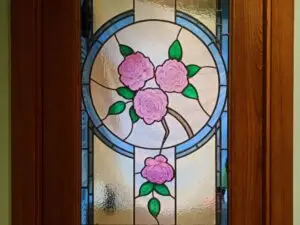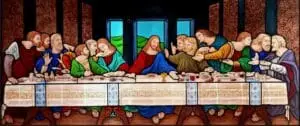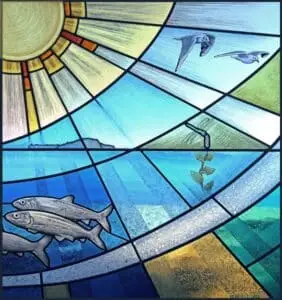Leadlights: Tradition and Craftsmanship
Leadlights windows are unique works of art, created by joining pieces of coloured glass with lead profiles. These lead cames, shaped and cut to size, surround the glass pieces and are soldered together with tin to ensure solidity and durability.
The lead cames feature a characteristic “H”-shaped section, inverted on one side, and can have either a flat or rounded surface. Their thickness typically ranges between 24 and 4 mm, offering excellent flexibility in design. Different thicknesses of lead can be used within a single panel, enhancing the overall composition and creating harmony in the artwork.
At IKO Studio we use the finest lead profiles produced by Cascade Metals
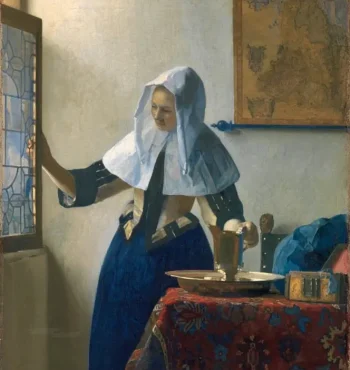
A Dive into History
The leadlights windows technique was born in the Middle Ages, when glass sheets were produced by mouth blowing only and had limited dimensions.
Unlike wood or stone, lead proved to be thinner and more flexible, allowing numerous pieces of glass to be joined together and creating large surfaces for the windows of Gothic cathedrals, symbols of the period.
Initially invented for practical purposes, leaded glass windows soon transformed into works of art thanks to the use of colored glass and glass painting. This made it possible to represent biblical scenes through real “paintings of light”, designed to communicate with a largely illiterate audience.
You can learn more about this topic on our page dedicated to the history of stained glass.
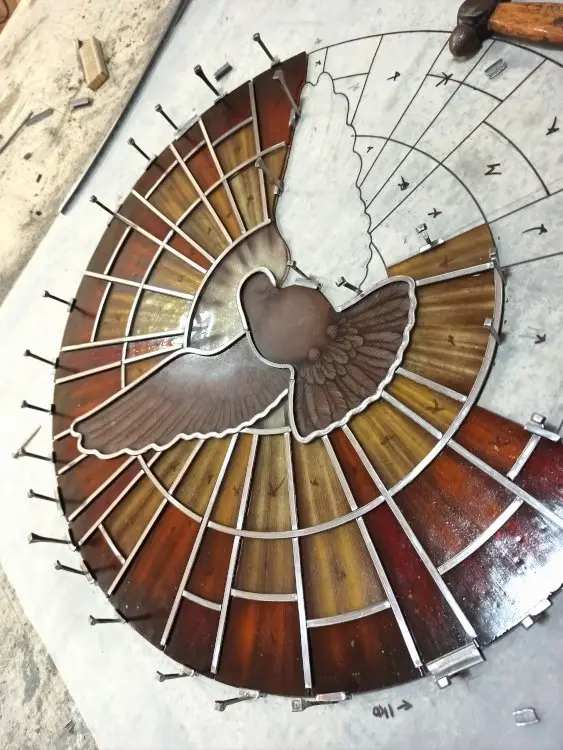
How to Make a Leadlight Window
Creating a leadlight window requires precision and craftsmanship.
- Design
The process begins with a drawing on tracing paper, where the cut lines of the glass are carefully traced. The thickness of the cutting lines must perfectly align with the central core of the lead profile. - Cutting and Finishing
The glass pieces are cut and finished using a grinder to ensure they match the desired shape and size with precision. - Assembly
Following the design, the glass pieces are positioned and fitted within the lead profiles. The joints are then soldered with tin to stabilise the structure. - Cementing
A dark putty is applied with a brush to seal the spaces between the glass and the lead, enhancing rigidity and making the window waterproof. Once dry, the excess filler is removed, revealing the full beauty of the piece.
How Much Do Leadlights Windows Cost?
Determining the exact cost of a leadlight window can be complex, as the price depends on several key factors. Let’s explore them in detail:
- The work Complexity
Leadlights are handcrafted, with each piece of glass carefully cut and finished by hand. The number and shape of the pieces directly impact the processing time, material wastage, and, consequently, the final cost. - The Type of Glass
Glass type significantly affects pricing. Industrial glass is more affordable, while blown glass sheets, which are hand made by professionals, can command much higher prices. - The Size of the Project
The size of the window also influences the cost. Smaller panels often have a proportionally higher price than larger projects, such as installations spanning several square metres.
In general, the price of leaded glass windows starts at approximately €900 per square metre. For more details, please visit our page dedicated to the price for a stained glass window.
We are happy anyway to provide you with a personalised quote, with no obligation.
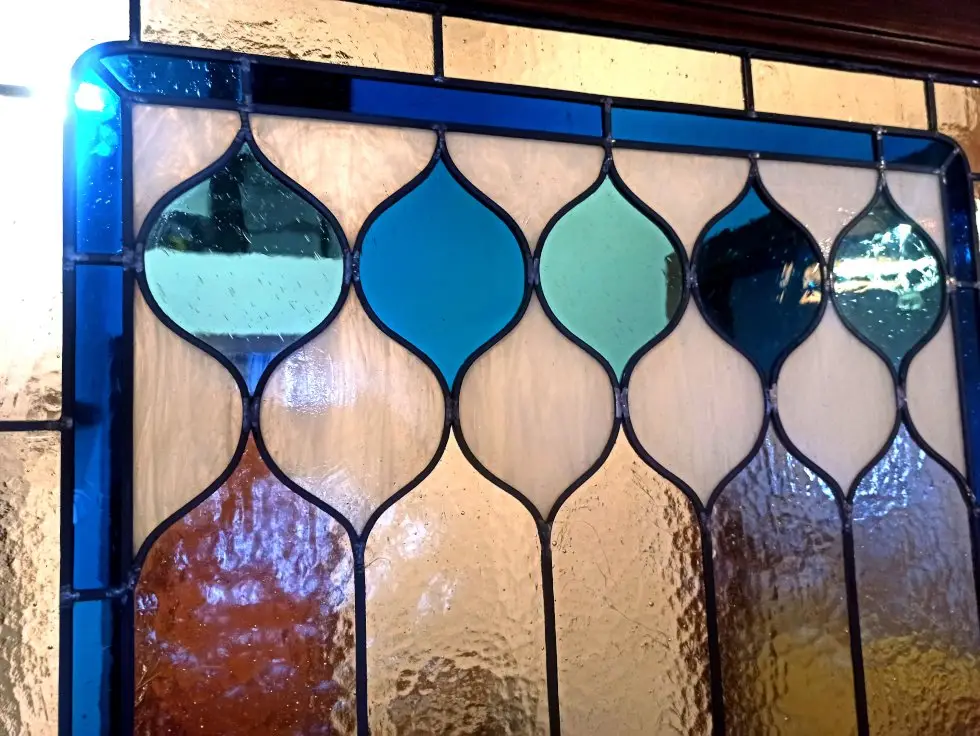

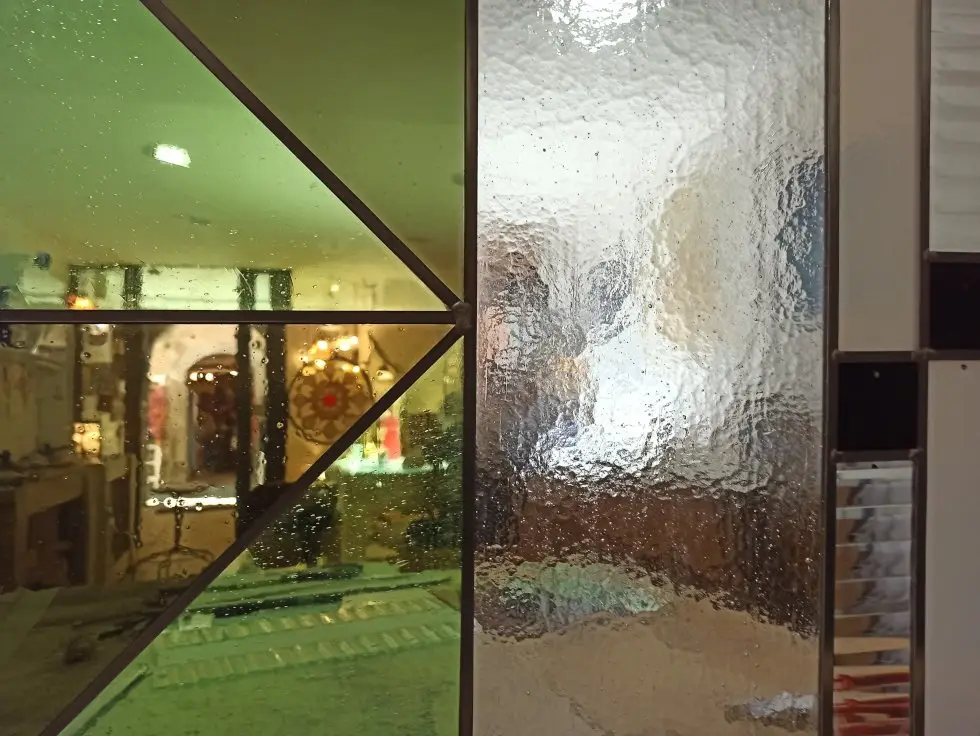

How to Commission a Leadlight at IKO Studio
Contacting us is easy! Simply send us an email or a WhatsApp message, including:
- The dimensions of your project;
- Your preferences and ideas. Attach images to help us understand the style you are looking for.
We will provide you with a personalised quote and a unique design, created especially for you.
What are you waiting for? Contact us today!



